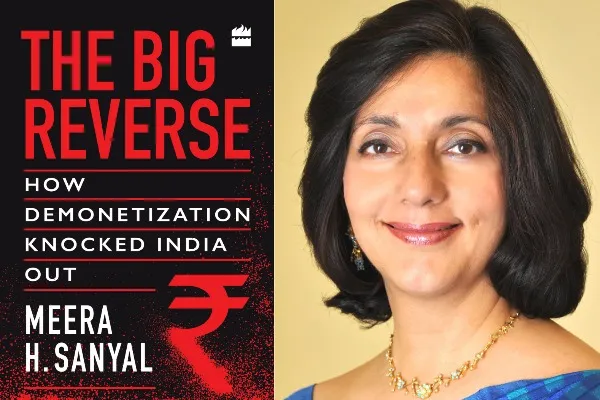
As India goes through an economic slowdown of considerable proportions , many opposition leaders are blaming it on the economic disruption caused by the decision to ban old cash notes and bring new ones into circulation done suddenly and without warning three years ago . This known as demonetization . The book I am reading is written by opposition leader of AAP party Meera Sanyal who was an economist .
The author first writes about history of demonetizations done before.
She gives examples of earlier demonetizations in India in 1946 and 1978 . She says that in 1946 the then RBI ( Reserve bank of India ) governor Sir Chintaman Deshmukh had opposed the demonetization. Again in 1978 the RBI governor I G Patel had opposed demonetization.
In 1978 the Janata party government had already declared in its election manifesto about note ban and hence people were more prepared. But both in 1978 and 1946 only 1000 5000 and 10000 rupee notes were banned . At that time only rich people had these notes and common people were not affected .
She also gives examples of demonetizations in foreign countries like Burma Nigeria Russia Ghana north Korea which were totally unsuccessful. She wonders why Indian government didn't learn from this history.
Now she comes to 2016 demonetization. She says that the really rich were not affected by note ban . Most of their black money was in swiss banks , gold and property. The ones affected were small and medium traders .
She also gives reason for introduction of 2000 rupee note which made future hoarding of money double easy . She says the large number of notes could not be replaced easily in short time and hence it was decided to pack larger volume of money in 2000 rupee note . So more cash could be back in the system quickly in smaller number of notes .
Also she asks why new notes were of different size than old notes . That made calibration of ATMs to new size note more lengthy and contributed to shortage of cash in early post demonetization period .
She says that the RBI was forced to accept the decision of demonetization and this started the process of erosion of it's autonomy . Also she claims that wall street journal says that modi government had raised fears of taking advice from quacks by implementing the decision .
Anyway as I read the book further , the author gives the usual sob stories of people who suffered temporarily during the demonetization. She gives many examples from fisherwomen in Mumbai to farmers in the countryside. I read those cursorily and fast . Because I had already seen that on TV in those times. In my opinion these people suffered only temporarily and later their sufferings eased as cash was made available. And Meera sanyal has not upto now come up with any explanation as to what made the same people vote for the ruling BJP party again in later elections.
Last edited by ashdoc; 09-29-19 at 02:24 PM.